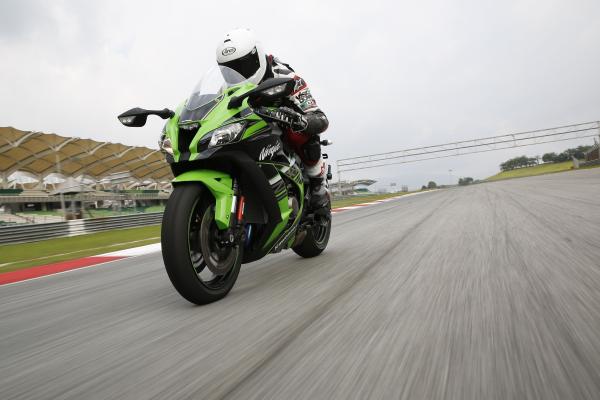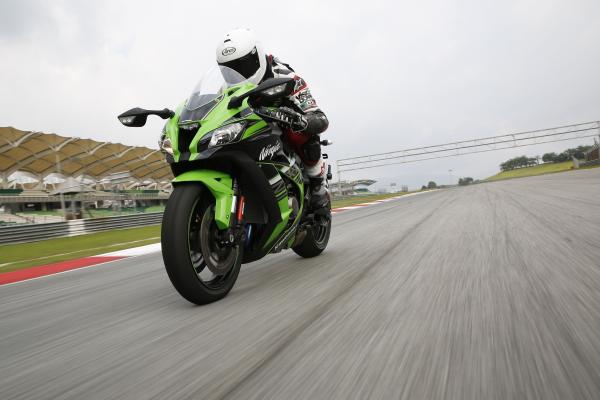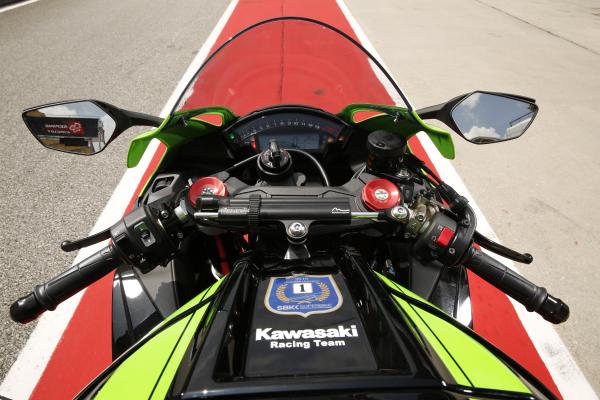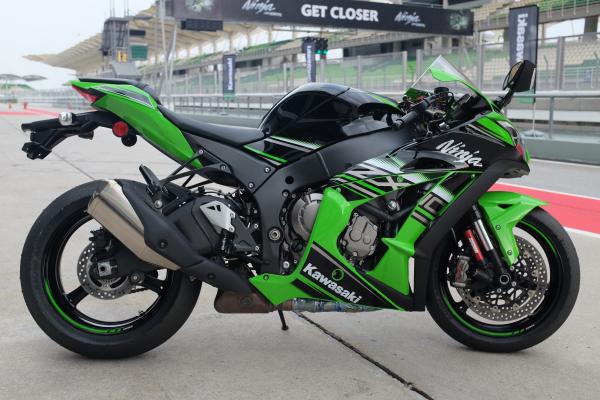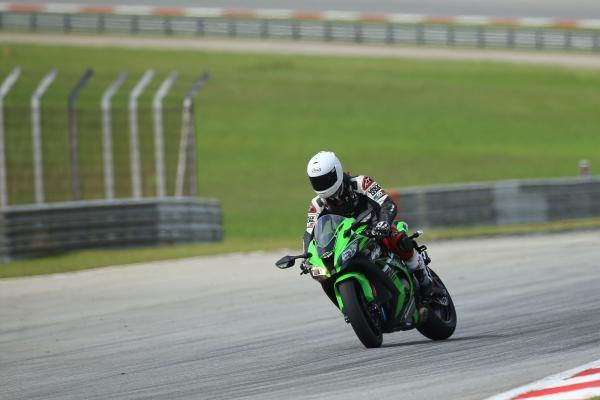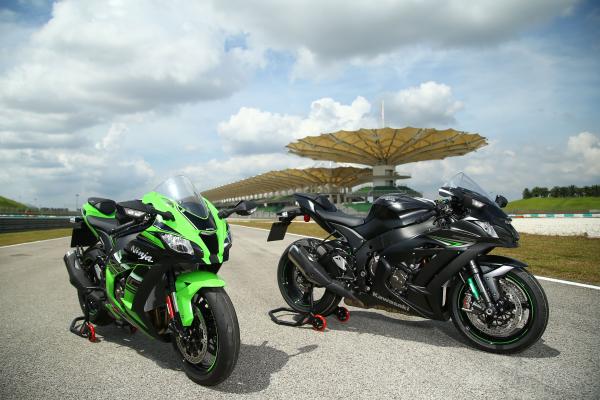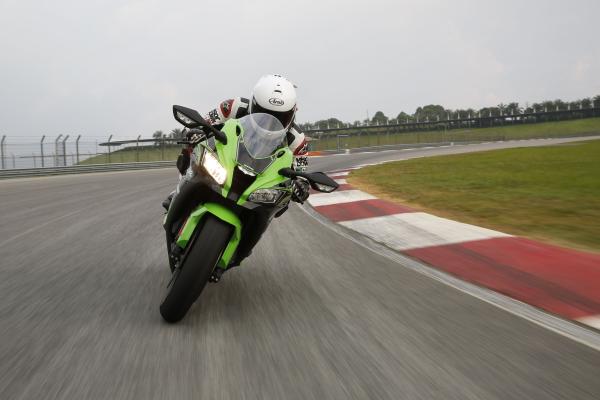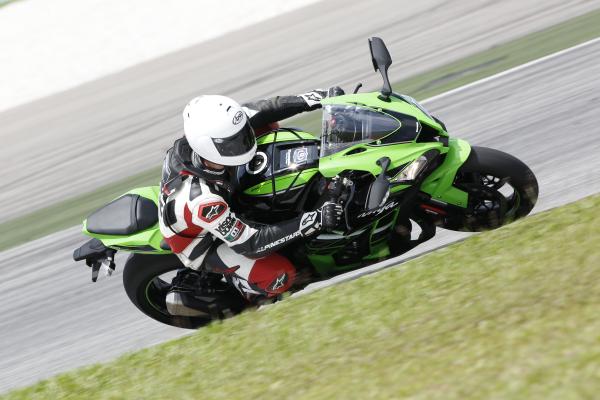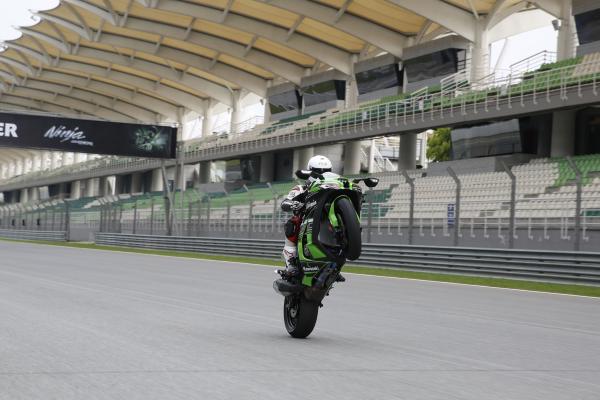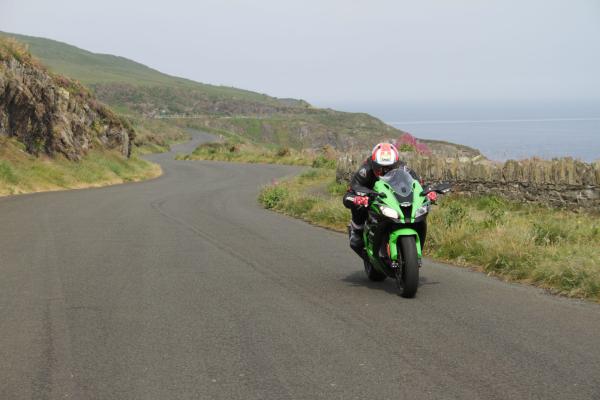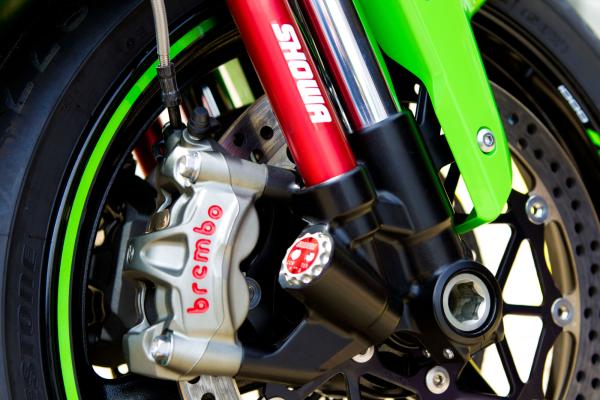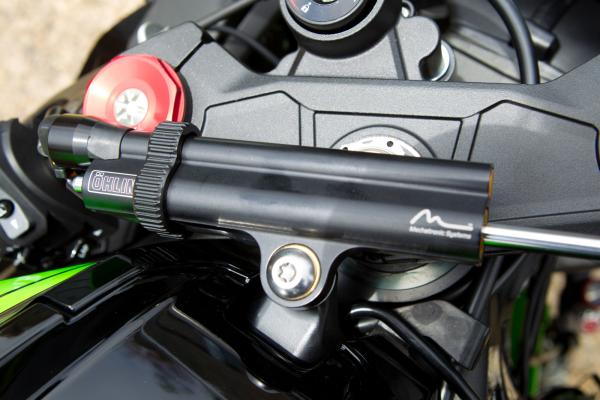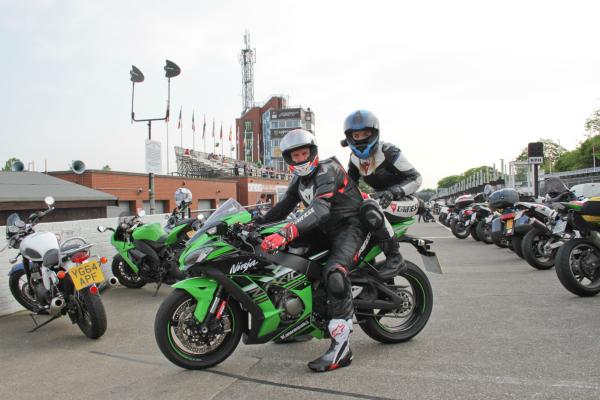2016 Kawasaki ZX-10R review
The 2016 Kawasaki ZX-10R might not look very different to the outgoing model, but don't let looks deceive you.
They say appearances are often misleading and the 2016 Kawasaki ZX-10R is a good case in point. The new model looks similar to the outgoing one but almost every component has been changed in Kawasaki's quest to make a better, faster and easier to ride 10R.
Clearly visible on the new 10R are the new Showa Balance Free Forks, Brembo M50 brake calipers and revised tail unit, but you’d be forgiven for thinking everything else is pretty much as it was.
In fact, the only major components carried over from the previous 2011 ZX-10R are the wheels, fairing mid-sections and the tank. The 2016 model's familiar look masks a whole host of changes and tweaks designed to improve the existing package.
2016 Kawasaki ZX-10R key features
Broadly speaking, the changes to the new 10R fall into two camps: ones Kawasaki wanted to make and ones they had to make. Let’s start with the ones they had to make.
The 2016 ZX-10R is the first Euro 4 compliant superbike (although you could argue that one, depending on how you view the 2015 Ducati 959 Panigale. The stricter Euro 4 regulations affect emissions and noise, presenting manufacturers with a new set of challenges. It’s generally accepted that the additional exhaust work involved in meeting Euro 4 adds weight and stifles power somewhat.
This is true with the new 10R, which at 206kg is 5kg heavier than the outgoing model and, despite a raft of engine tweaks, produces very similar power figures. However, Kawasaki have introduced some very clever touches to mitigate any Euro 4 setbacks - more on those later.
The new 10R is only available with ABS (in order to meet the European Community Whole Vehicle Type Approval) and unlike in the past, it can’t be switched off from the dash (although road riders who like their braking slightly riskier can just pull the fuse out, track riders can fit a special ‘Race Kit’ dongle to remove ABS on the rear or switch it off completely).
Now onto the changes Kawasaki wanted to make. Go and get yourself a fresh cuppa, this could take a while.
Starting with the engine, bore and stroke at 76mm x 55mm is about the only thing that remains the same. There’s a new cylinder head, housing new titanium inlet and exhaust valves. the exhaust valves are up 1mm from 24.5mm to 25.5mm and the exhaust ports are now polished.
The crankshaft has been heavily revised with feedback from Kawasaki’s WSBK team and has a 20% lower moment of inertia, enabling the engine to spin up faster. It also reduces the gyroscopic forces in the engine, making the handling that bit lighter. the lighter crankshaft also allows a weight saving on the engine balancer and, according to Kawasaki, the reduced engine vibration allows the use of lighter vibration counter-measures, like bar-end weights. The pistons are made from a new material, are shorter and slightly lighter, again with the aim of allowing the engine to rev faster. Kawasaki claims its increased engine reliability with 20% thicker cylinder linings, up by 1mm to 6mm.
Another clever detail taken directly from the WSBK team is the cooling system. On the 2016 model, water is used to cool the oil cooler, that water then passes to the radiator instead of returning to the water pump.
The titanium alloy stock headers have been redesigned (and although Kawasaki wouldn’t confirm or deny, rumour has it they were developed with Akrapovic). Kawasaki claims they’re now very close to the headers you’d get with a full system.
The airbox is up from 8L to 10L, while the air filter is a whopping 60% bigger. Improved airflow is the name of the game.
The new Showa Balance Free suspension is the first thing many will notice on the 2016 model. A joint effort by Showa and Kawasaki, the 43mm forks have been developed with the WSB team and from speaking to the development team, it’s clear the BF forks and rear shock were paramount to this bike.
The system essentially separates the functions of the suspension; damping, compression and rebound. The coloured chamber contains pressurised nitrogen and controls damping, While compression and rebound are hydraulic and controlled independently, meaning a tweak to one won’t affect the other.
Kawasaki claims the system enables better traction thanks to increased responsiveness, improved stability on the brakes and increased feel and comfort.
The frame looks identical but has been completely revised. The wheelbase, at 1440mm is 15mm longer than the previous model. It’s a long time since I’ve seen a manufacturer introduce introduce a double-digit change in wheelbase.
The headstock is 7.5mm closer to the rider, which Kawasaki says places more weight over the front of the bike and in turn aids feel and stability and corner entry. The swingarm is 15.8mm longer than on the previous model, shifting the relative weight bias towards the front of the bike.
Braking was an Achilles heel on the old 10R but it has been enhanced on the new model. The 330mm semi-floating discs are 20mm larger and they’re now gripped by Brembo M50 four-pot calipers. The icing on the cake is the Brembo radial master cylinder and the cherry on top are the brake lines which are braided steel as standard.
So we’ve established that the majority of changes to the 2016 10R are hard to spot, but some of the biggest changes are in an area that’s almost impossible to spot: the electronics.
Kawasaki has introduced a new 32-bit ECU and an additional clever bit of electro-trickery called an Inertial Measurement Unit, supplied by Bosch. The IMU helps take the new 10R onto another level in terms of traction management. Sensors measure the pitch, roll and yaw, which along with front and rear wheel speeds, engine rpm, gear and throttle position are all fed from the IMU into the ECU.
Kawasaki has developed its own software (rather than buy an off-the-shelf package) to interpret this data. the S-KTRC (traction control) system reads the conditions 200 times a second and makes adjustments via the ignition and then electronic throttle valves to help the rider reach the limits of traction.
The IMU also enables Kawasaki to introduce what it's calling ‘Corner Management’. 'So is this cornering ABS?' I ask Matsuda-san, former Kawasaki MotoGP boss and the ZX-10R Project Leader.
He chuckles and proceeds to tell me that cornering ABS is something you can buy from Bosch, whereas this system has been developed by Kawasaki and uses the IMU to measure the bike’s pitch, lean angle and brake pressure. The system can reduce brake pressure to prevent the bike standing up mid-corner or in Kawasaki’s words: ‘cornering management assists riders in tracing their intended line through the corner.’ Clever stuff.
The new 10R also features a quick shifter for clutchless upshifts. With the race ECU, you can also shift down without the clutch and let the auto-blipper do the rest.
2016 Kawasaki ZX-10R first ride
The 2016 ZX-10R was launched at the Sepang International Circuit. Having done over 12,000 miles on the outgoing 10R, I feel I’ve got a strong platform on which to base my opinion of the new model.
For our first session the bikes were fitted with Bridgestone R10s, a stickier version of the RS10 tyres supplied on the bike and for the rest of the day we rode on Bridgestone V02 slicks.
The view while sat on the bike feels almost identical to the previous model. The unique dash with ‘sideways’ rev counter, the wide mirrors, the Ohlins electronic steering damper. The giveaways are the Brembo radial master cylinder and screen which is no longer ‘floating’.
It goes without saying, the slightly wider front fairing and screen supports add visual weight. Take a look at the new 10R from a few different angles and you can see it’s more rounded than the previous version.
I feel slightly more perched on the bike thanks to the 22mm taller seat but it doesn’t feel cramped for this 5’11” frame, despite the bars being that bit closer to the tank. Fire up the ‘sounds like your battery’s dying’ starter motor and the 10R quietly purrs into life. You can hear the engine over the exhaust but thanks to the Euro 4 regulations, neither give much of a hint to the brain-bending capability of a litre-class superbike.
The first session is more of a fact finding mission to figure out the best way to lap the circuit without the aid of an ambulance. Then it’s time to get to grips with what the 10R can offer.
Despite the geometry changes, the riding position doesn’t feel too wrist heavy but you definitely feel like you’ve over the front end without feeling like your arse is poking up at the sky.
The standard suspension - tweaked for the track - feels taught but not tight. Driving out of slower corners you can feel the rear squat under load as you’d expect, which helps you ‘feel’ the grip on offer and gauge how much more throttle you can wind on.
Of course, with the ridiculously clever electronics on offer on today’s superbikes, you can never be 100% confident that you’re feeling what you think you’re feeling or whether there’s electronic intervention in there somewhere, adjusting your throttle inputs in a microscopic way to give you the ‘correct’ amounts of throttle.
Either way, the 10R has lost none of its magic when it comes to corner exits. The technique I find that works best on the outgoing model is ‘hit the apex and give it hell’ and at Sepang I didn’t change that philosophy for the new model.
Driving out of fast corners you can feel the grip crumble away underneath you as you wind up the revs and march on through the gears but at no point do things go vague.
As I gained confidence in what the tyres could offer, I could feel the bike not quite delivering on my optimistic throttle inputs but only when I gave the 10R a big handful out of slow and mid-speed corners could I feel the traction control fire its warning shot, making the bike jolt for a split-second before normal progress resumed.
Matsuda-san, the ZX-10R Project Leader said that he didn’t want to spend money on things like a TFT display when he knew that meant he wouldn’t have the budget available to use the Showa BF suspension.
Kawasaki has tweaked the gearbox ratios to aid drive. First gear is the same as on the previous 10R; it’ll easily crack 100mph. However, the remaining ratios are all shorter and on the new bike, second gear is closer to first while third sits where second was on the previous model, fourth where third was, etc.
I was expecting this to do away with any below-7,000rpm flat-spot feeling on the new 10R but in the early session, through turn four, a tight uphill right hander, I couldn’t carry second gear through there.
Sure, first is the gear to be in but I reasonably expected that a 200hp motor would haul me through second but the 10R really didn’t like carrying that higher gear at 5,000rpm. Get the rev-counter in the red zone (8,000rpm and above) and the 10R makes light work of any gear.
The KQS quickshifter makes a big difference to the composure of the bike, making mid-corner gear changes super smooth. A bike as technology-packed as the new 10R without a quickshifter would feel, well, weird.
However it wasn’t faultless. On a few occasions I had to give it a couple of nudges to get the quickshifter to throw me the next cog.
The brakes are a strong package; larger discs, Brembo M50 calipers, a Brembo radial master cylinder and steel braided brake lines. Not only are they strong but they’re easy to use. Two-finger braking was the order of the day and a decent squeeze of the lever sets the bike scrubbing off speed without flapping its feathers.
The Showa Balance Free forks feel superb and by that I mean, they don’t dive under heavy braking, they provide an equal and opposing force to whatever braking you apply. After the first session, Kawasaki turned off the ABS (and therefore ‘Corner Management’) so it was just me and the Brembos doing the business.
The feel is superb and once I was dialled in, I could trust the rear end starting to come around on me that bit further during super-hard braking - and all the time the front felt completely planted.
For the first five laps of every session, the brakes were plentiful but - and I had to really think about this and double check with a couple of other riders - I felt the brakes didn’t offer the same performance all the way through the session, with the lever coming back that bit further every time. In heavy braking zones, the moment the brakes bite, my brain calibrates whether or not I’m going to make the apex and on a couple of occasions it correctly predicted I wouldn’t. And I didn’t.
The counter to this is a certain Mr Tom Sykes, purveyor of exemplary motorcycle riding skills, who was riding the exact same bike as me and he didn’t have any issues.
Still, for track work, I’d bung in a set of Brembo Z04 pads to complete the otherwise superbly capable braking package.
It’s easy to take for granted just how well this bike handles, how easy it is to get it into a corner. My theory on this is simple (and possibly massively flawed): the better a bike handles, the less effort required to lap at a certain speed, so you end up winding up the pace until you reach your own limit to how fast you can wrestle the bike around.
And with that in mind, every bike ends up being about as much effort as the next one. Therefore you can get a poor handling bike around a lap about as fast as a well handling bike, it’s just you’ll be working twice as hard on the bike that doesn’t handle.
The new 10R is absolutely effortless when ridden at a moderate pace but the fact it’s so easy to ride means you can get right on the money, straight away and get up to a respectable pace without twisting yourself in knots. Even at the fastest pace my brain could handle, the 10R wasn’t hard work.
Sepang features quite a few double-apex corners which require you to trust the front end in order to fire into the first apex all the while scrubbing off enough speed to point the bike back to the second apex on the way out of the corner.
If the bike doesn’t brake, doesn’t handle or won’t stay composed in these sorts of situations, you’ll end up 50-pence piecing your way around a lap, double-checking the feel and feedback at every stage but on this new 10R you can dive in, knowing you’ll be able to sort out any speed or lean angle adjustments mid-way through a corner and still fire out the other side.
Riding the new 10R on track made me realise the myriad markers and bits of feedback I rely on to give me an idea of how fast I’m going, how close the limit I’m getting. The most obvious were the pegs, which I never touched down once, despite tipping over to piss-taking levels of lean.
There’s something reassuring about scraping a peg that you only realise is reassuring once you don’t seem to have one to scrape.
Another example is through turn six, a fast right hander. The front end went from feeling great to pattering. The sensation I’m used to when asking too much of the front end through a corner is the front end feeling heavy and slightly vague and the whole bike pushing wide.
In this instance the bike held a line but pattered away, seemingly happy but it left me wondering whether I was being given more visibility of the grip crumbling away underneath me or whether I’d waded into dangerous waters, right up to my nuts and was lucky to escape. The trouble is, the new 10R flattered me into thinking I could do it.
In many ways, I left Sepang with the feeling that I’d only scraped the surface of what the new 10R is capable of. It’s one of only a handful of bikes I’ve ridden that makes me think, in fact know, that I need to change my riding style. Not only my riding style but you need to recalibrate your own limits and expectations of what’s possible.
The bike was so easy to ride, I found a small amount of brainpower available to critique my own riding while lapping at a reasonable pace, rather than putting all my efforts into keeping the thing out of the gravel.
2016 Kawasaki ZX-10R road test
Words by Kane Dalton
Riding Kawasaki’s 2016 ZX-10R to the Isle of Man TT gave me the opportunity to do our first proper road test of it, following the launch on track in January.
I did 1,100 miles in total, ranging from London traffic to the Mountain, where I took the chance to stretch its legs on derestricted sections.
The engine’s really revvy. I was expecting an aggressive response but the power delivery is very smooth, the gears tall. It’s almost peaky, with a subtle power delivery low-down that makes it manageable on fast roads and mild-mannered when you need it to be, around town.
Only over 6,000rpm does the beast really come alive – and does it come alive.
The red-line is at 12,500rpm, by which time you’re not looking at the clocks but at the rapidly approaching horizon, and the dash lights up red in the lower periphery of your vison.
Finally the limiter kicks in, but subtly, not like a wall at the top of the range. The power just levels off.
The throttle is quick-action so you can get to the stopper with ease, a nice touch on a stock bike.
The suspension is WSBK-derived ‘Showa Balance Free’ - which isn’t as unbalanced as that name suggests.
It conistst of a 43mm gas fork, which gives excellent feedback, and a shock allowing for adjustment of damping, compression and rebound.
I was comfortable leaving it on the default factory settings, and didn’t change anything when I carried a pillion and luggage either. Fully loaded up, it ironed out the bumps really well.
Yet riding solo at speed there was very little fork dive when I dabbed the front brake, and loads of stability and grip when I got on the power.
The geometry has been altered for 2016, with the intention of placing more weight over the front tyre and improving feedback.
The brakes work well but they are not what I hoped for when I saw all the shiny Brembo parts. The Brembo M50 calipers combined with the 330mm semi-floating discs (up from 310mm on the 2015 ZX10R) and braided hoses should offer the best in braking – but the master cylinders look more basic. I would probably upgrade to something like a 20mm RCS radial master cylinder for more power and precision.
Obviously you get ABS as standard, but now it can’t be switched off at the dash. Road riders determined to deactivate it can still go on the hunt for a fuse (of course we wouldn’t recommend it), while track riders can fit a special ‘Race Kit’ dongle to remove ABS on the rear wheel or switch it off completely.
The new ZX-10R also has a ‘Corner Management’ system, which is Kawasaki’s version of cornering ABS.
An inertial measurement unit (IMU) measures conditions including lean angle and front and rear wheel speeds, 200 times a second, and makes adjustments on your behalf accordingly.
When I plucked up the courage to test it in a corner, I felt it working, because the bike slowed in a controlled way despite my aggression, but I couldn’t really be sure of the exact point at which it kicked in. It’s too subtle for that.
I’ve no doubt it reduced some of my braking pressure though.
Sensors also measure pitch, roll and yaw, factors which are used by the traction control system to stop you spitting yourself off the bike with too much power.
You can toggle the level of traction intervention on the move with a touch of a button.
The 10R is also equipped with launch control, helping to deliver optimum forward drive off the start line.
It’s got a lightweight clutch which is easy on the wrist, a big bonus around town.
And you get fully-adjustable clip-ons, a very attractive feature, letting you find your optimum riding position.
There’s an electronic Ohlins steering damper, which stiffens with speed. I found a couple of times when I was hard on the gas at slower speeds I could have done with more damping.
The quick-shifter adds to the seamless feel of the bike - there are no clunks or jerks [apart from the one riding - Ed] as you shift up through the box. You can change as quckly as you can move your foot.
At first I thought it might work on downshifts, and expected to hear an auto-blip, but this proved incorrect. What’s that saying? RTFM - read the ******* manual.
The functionality for auto-blipping clutch-less downshifts is built into the bike, but you need to fit the race kit to activate it.
The ZX-10R is a surprisingly versatile weapon, as capable in town, or carrying a pillion (mine had no complaints despite the small seat) as well as hitting 140mph on the Mountain.
I recommend it for all and any of those things, ideally in a single trip.
Should you buy the 2016 Kawasaki ZX-10R?
The new 10R offers one of the most comprehensive and sophisticated packages available in a superbike, with a focus on performance rather than gimmicks but you'd hardly notice the extent of what's changed or what's on offer from just glancing at the the brochure.
Don’t let appearances fool you. The new 10R might not look that different to the outgoing model but if you're focused on looks, you're missing the point. What really matters about the new ZX-10R is invisible to the eyes.
2016 Kawasaki ZX-10R specs
- Model tested: 2016 Kawasaki Ninja ZX-10R
- Price: From £13,649
- Engine: 998cc, four-cylinder
- Power: 200hp @ 13,000rpm
- Torque: 83.7lbft @ 11,500rpm
- Kerb weight: 206kg
- Frame: Twin-spar, cast aluminium
- Tank capacity: 17 litres
- Seat height: 835mm
- Colours: Black or Green KRT Replica (£13,749) or Winter Test Edition (with Akrapovic slip-on) £14,399
